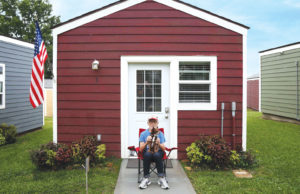WASHINGTON — The number of people filing initial claims for
state unemployment benefits fell by 20,000 to a seasonally adjusted 512,000 in
the week that ended Oct. 31, the Labor Department reported Thursday.
It was the first decline in two weeks. It’s the fewest
initial claims since early January. Initial jobless claims have been above
500,000 for 51 straight weeks.
The news was mixed, said Jennifer Lee, an economist for BMO
Capital Markets. The decline in initial claims was “clearly good
news,” but her enthusiasm was tempered by a rise in recipients of extended
federal benefits.
The figures come one day before the Labor Department reports
on the October employment rate. Economists surveyed by MarketWatch expect
nonfarm payrolls to fall by 150,000 in October, and for the unemployment rate
to rise to 9.9 percent.
“If the pace of decline from the peak is maintained, we
are still some five months away from claims reaching the level that will signal
net job growth,” wrote economists for RDQ Economics.
Economists surveyed by MarketWatch expected initial claims
to fall to about 520,000. The level of initial claims in the week that ended
Oct. 24 was revised up by 2,000 to 532,000.
The four-week average of initial claims fell by 3,000 to
523,750, also the lowest since January. The four-week average smoothes out
quirks due to one-time events, such as bad weather, holidays or strikes.
Continuing state claims fell by 68,000 to a seasonally
adjusted 5.75 million, the lowest since March. The insured unemployment rate
(the proportion of covered workers who are collecting state benefits) was
unchanged at 4.4 percent.
Compared with a year ago, initial claims are up 9 percent,
while continuing claims are up 55 percent.
Because unemployment is so high and so persistent, the
federal government has created programs to provide extended benefits beyond the
typical 26 weeks. The number of people collecting extended federal benefits
rose by 117,000 to 4.08 million, not seasonally adjusted.
Including those federal programs, the number of people
claiming benefits of any kind in the week ending Oct. 17 was 9.53 million, not
seasonally adjusted, up 136,000 from 9.36 million in the previous week.
The Senate approved legislation on Wednesday to extend
benefits for up to 20 additional weeks in the hardest-hit states, for a maximum
of 99 weeks.
{::PAGEBREAK::}
In a separate report, the Labor Department said productivity
in the U.S. nonfarm sector rose at a 9.5 percent annual rate in the third
quarter, the biggest gain in six years. Unit labor costs plunged 5.2 percent.
In the past year, productivity is up 4.3 percent, while unit labor costs are
down a record 3.6 percent.
The decline in continuing state claims in the past few
months could show that companies are more willing to hire, or it could mean that
more people were exhausting their benefits and moving into the extended federal
benefits program, which is reported separately. Typically, people are eligible
for 26 weeks of regular state unemployment benefits.
Initial claims represent job destruction, while the level of
continuing claims indicates how hard or easy it is for displaced workers to
find new jobs. The jobless claims report shows businesses are still laying off
workers at a rapid rate, and finding a replacement job is extremely difficult for
those who’ve lost work. The unemployment rate rose to a 26-year high of 9.8
percent in September.
Benefits are generally available for those who lose their
full-time job through no fault of their own. Those who exhaust their
unemployment benefits are still counted as unemployed if they are actively
looking for work.
More than half of those collecting state benefits ultimately
exhaust their regular state benefits before finding work, usually after
receiving checks for 26 weeks. In September, the exhaustion rate was 52.4
percent, the highest on record dating back to 1972.
In September, a record 5.4 million people had been
unemployed for longer than six months, according to the separate household
survey of employment.
Many of those who exhaust their state benefits are eligible
to collect under special federal programs, for a maximum total of 79 weeks.
Because of the way the program is set up administratively, the government does
not report regularly on the number of people who’ve exhausted their extended
federal benefits.
A private advocacy group has estimated that 1.5 million
people will exhaust their extended benefits by the end of the year.
Via McClatchy-Tribune News Service.














